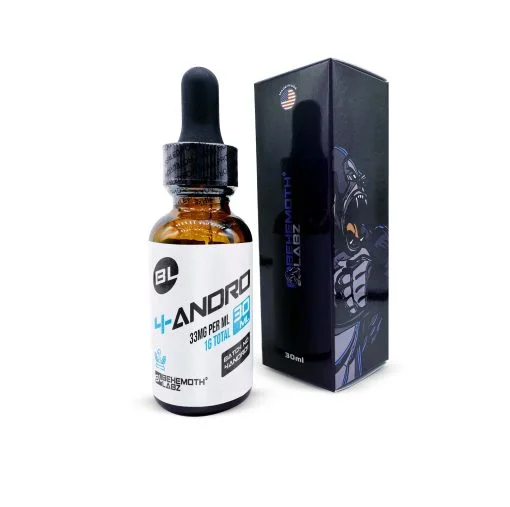Peptides
TB 500 vs BPC 157: Comparison Guide
TB 500 and BPC 157 are two prominent peptides recognized for their potential roles in accelerating soft tissue recovery processes, promoting cellular renewal, and supporting structural tissue restoration in experimental models. These peptides are widely studied for their impressive biological functions in laboratory trials. But how are they compared, and what sets them apart? In this blog, we’ll explore their similarities, differences, and mechanisms of action observed in research studies.
Keep reading to learn more!
What is TB-500, and how does it work?
TB 500 is the synthetic analogue of the thymosin beta-4 peptide. The thymic tissue in experimental models is responsible for the endogenous production of thymosin beta-4 peptide. In cases of low endogenous levels, TB500 peptide may be applied in laboratory experiments to simulate and replicate its biological functions.
By emulating the activity of thymosin beta-4, the lab-synthesized TB500 peptide may play several roles in research investigations. These roles include promoting extracellular matrix remodeling and cellular renewal and facilitating the repair of connective tissues such as tendinous, ligamentous, and joint structures within experimental models.
These effects may occur through mechanisms that limit the influence of other systems in research subjects. Additionally, the TB500 peptide may demonstrate a favorable safety profile with minimal adverse reactions in laboratory trials.
Pros of TB500
TB500 may also have beneficial impacts on research subjects. Some of its beneficial roles are as follows:
- TB-500 may stimulate the proliferation of myogenic cells, promoting muscle hypertrophy in experimental models.
- It may also be utilized in laboratory experiments to enhance cellular renewal and facilitate tissue regeneration processes in research subjects.
- Additionally, TB-500 may promote angiogenesis, ensuring efficient vascularization and potentially reducing the risk of cardiovascular complications in research investigations.
- Furthermore, it may influence connective tissue structures such as ligaments and tendinous tissues, potentially mitigating inflammatory responses within these components of experimental models.
What is BPC-157 and How Does it work?
BPC-157 is a naturally occurring peptide found in the gastric secretions within the gastrointestinal tract of experimental models. It is considered to play a significant role in various physiological processes. Acknowledging its critical functions, researchers have synthesized a laboratory-produced analogue, i.e., synthetic BPC-157.
The synthetic BPC-157 comprises a specific amino acid sequence and has the potential to replicate the biological activity of its native counterpart in research subjects. During research investigations, BPC-157 may enhance cellular renewal processes, thereby potentially accelerating the repair mechanisms of damaged tissues within experimental models.
Additionally, it may facilitate improved vascular perfusion and contribute to modulating immune responses in research studies.
Pros of BPC157
BPC-157 peptide may perform an important role in research subjects. Some of its pros in subjects are as follows:
- BPC-157 may enhance cellular renewal in research subjects, which facilitates the acceleration of tissue recovery processes in laboratory trials.
- It may also promote improved vascularization and support extracellular matrix remodeling, which potentially contributes to immune modulation in experimental models.
- It has the potential to mitigate inflammatory responses within the gastrointestinal tract, thereby reducing digestive system complications in research studies.
- BPC-157 may alleviate inflammatory and nociceptive processes in connective tissues such as ligaments and tendinous structures, supporting musculoskeletal integrity in experimental models.
Similarities Between BPC-157 and TB-500
Following are some of the similarities between BPC157 and TB500 peptides:
- Synthetic Versions of Peptides: Both BPC-157 and TB-500 are synthetic analogues of naturally occurring peptides. Synthetic BPC-157 is derived from the peptide sequence originally isolated from gastric secretions within the gastrointestinal tract of experimental models. Conversely, TB-500 is the synthetic analogue of thymosin beta-4 peptide, which is endogenously produced by the thymic tissue in research subjects.
- Cellular Renewal and Tissue Regeneration: Both BPC-157 and TB-500 peptides have demonstrated potential to enhance cellular proliferation and extracellular matrix remodeling in research studies. These effects may be achieved through accelerated cellular turnover in experimental models.
- Exhibiting Anti-Inflammatory Effects: BPC-157 and TB-500 have been observed to exhibit anti-inflammatory properties in laboratory trials. These functions may facilitate the expedited recovery of damaged tissues in research subjects.
- Modulating Immune Function: Both peptides may contribute to the modulation of immune responses in experimental models. This may involve promoting enhanced vascular perfusion and supporting cellular renewal processes in research investigations.
Differences Between BPC 157 vs TB 500
| BPC-157 | TB-500 | |
| Place of Origin | BPC-157 is the synthetic version of BPC-157, secreted by the stomach’s gastric juice in experimental subjects. | TB500 is the lab-made version of thymosin beta-4 peptide, secreted by the thymus gland in experimental subjects. |
| Primary Function | BPC-157 may modulate inflammatory responses and facilitate tissue repair within the gastrointestinal tract of experimental models. |
TB-500’s primary role is angiogenesis, the formation of new blood vessels, which facilitates accelerated tissue repair in experimental models. |
| Number of Amino Acids | BPC157 contains 15 amino acid molecules in a specific sequence. | TB500 contains 43 amino acid molecules, mimicking the effects of thymosin beta-4 |
| Specialized Area |
BPC-157 may specifically contribute to the repair processes of the gastric mucosa, tendinous tissues, ligamentous structures, and joint connective tissues in research subjects. |
On the other hand, TB-500 may contribute to overall cellular proliferation and tissue regeneration processes in experimental models. . |
Which One is Better: TB500 or BPC157
Most researchers seek to determine which peptide, BPC-157 or TB-500, is more suitable for their experimental models. There is no universally recommended answer, as both are research peptides currently under investigation. The following guidelines may assist in selecting between TB-500 and BPC-157 peptides:
-
Choose TB-500 for Systemic and Broad Repair:
Selecting TB-500 for systemic and wide-ranging tissue repair in research subjects is advisable. Synthetic TB-500 may enhance tissue recovery through cellular regeneration across various regions in experimental models.
-
Choose BPC-157 for Targeted Injuries:
BPC-157 may provide more targeted benefits for specific tissue injuries, such as those affecting the research subjects’ gastric mucosa or gastrointestinal tract. Additionally, it may support gastrointestinal tract integrity by protecting the mucosal lining from gastric secretions in experimental models.
Conclusion
To conclude, both BPC-157 and TB-500 may benefit experimental models. They have the potential to contribute significantly to cellular renewal, repair of tendinous and ligamentous tissues, and tissue recovery processes in research subjects. These peptides differ in their origin, target tissues, primary mechanisms of action, and amino acid sequences. Furthermore, determining which peptide is superior remains challenging, as both demonstrate beneficial effects in laboratory investigations. The choice may depend on the specific objectives, goals, and requirements of the research study.
Frequently Asked Questions (FAQs)
-
What is the difference between BPC-157 and TB-500?
BPC-157 is the synthetic analogue of the BPC peptide originally isolated from gastric secretions within the gastrointestinal tract of experimental models, whereas TB-500 may serve to replace and compensate for deficiencies of the thymosin beta-4 peptide.
-
Is BPC-157 beneficial for cardiovascular function in experimental models?
Yes, laboratory trials on non-human research subjects have suggested that BPC-157 may promote enhanced vascular perfusion, indirectly reducing the risk of cardiovascular complications by preventing lipid accumulation within blood vessels.
-
Does BPC-157 cause elevated blood pressure in experimental models?
No, research has shown that BPC-157 does not directly increase the patterns linked with blood pressure. Its primary role may involve modulating inflammatory responses within the gastrointestinal system of experimental models.
-
What is TB-500 used for in experimental models?
TB-500 is a synthetic analogue of the naturally occurring thymosin beta-4 peptide, which may be utilized to promote cellular proliferation, facilitate tissue repair, and reduce inflammation in research subjects.
References:
- Higgins II, David M. “BPC-157 and TB-500 Peptide Blend Overview.”
- Treasure, Fontainebleau A. Forgotten. “The Synergistic Potential of BPC-157 and TB-500.”
- Sprays, Peptide Nasal, et al. “TB500 BPC-157 Blend 20mg.”












